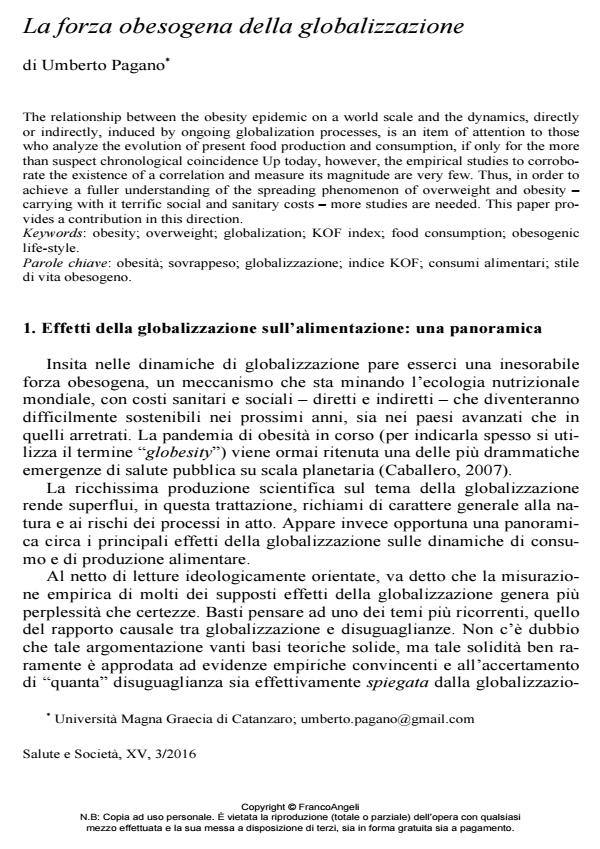La forza obesogena della globalizzazione
Titolo Rivista SALUTE E SOCIETÀ
Autori/Curatori Umberto Pagano
Anno di pubblicazione 2016 Fascicolo 2016/3
Lingua Italiano Numero pagine 16 P. 158-173 Dimensione file 484 KB
DOI 10.3280/SES2016-003013
Il DOI è il codice a barre della proprietà intellettuale: per saperne di più
clicca qui
Qui sotto puoi vedere in anteprima la prima pagina di questo articolo.
Se questo articolo ti interessa, lo puoi acquistare (e scaricare in formato pdf) seguendo le facili indicazioni per acquistare il download credit. Acquista Download Credits per scaricare questo Articolo in formato PDF

FrancoAngeli è membro della Publishers International Linking Association, Inc (PILA)associazione indipendente e non profit per facilitare (attraverso i servizi tecnologici implementati da CrossRef.org) l’accesso degli studiosi ai contenuti digitali nelle pubblicazioni professionali e scientifiche
The relationship between the obesity epidemic on a world scale and the dynamics, directly or indirectly, induced by ongoing globalization processes, is an item of attention to those who analyze the evolution of present food production and consumption, if only for the more than suspect chronological coincidence Up today, however, the empirical studies to corroborate the existence of a correlation and measure its magnitude are very few. Thus, in order to achieve a fuller understanding of the spreading phenomenon of overweight and obesity - carrying with it terrific social and sanitary costs - more studies are needed. This paper provides a contribution in this direction.
Parole chiave:Obesità; sovrappeso; globalizzazione; indice KOF; consumi alimentari; stile di vita obesogeno
- Salute e alimentazione nel Corporate Food Regime Francesco Saverio Caruso, Umberto Pagano, in SALUTE E SOCIETÀ 3/2018 pp.57
DOI: 10.3280/SES2018-003005
Umberto Pagano, La forza obesogena della globalizzazione in "SALUTE E SOCIETÀ" 3/2016, pp 158-173, DOI: 10.3280/SES2016-003013